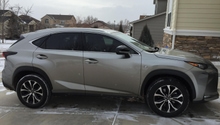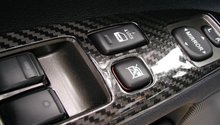Lexus: Window Tint Modifications
Window tinting changes your car's appearance, but it is useful in other ways as well. For example, tinted windows promote privacy while keeping the car's interior cool, especially during warm summer days. Window tinting can also help to eliminate pesky sun glare on the road. Tail light tints are another option.
This article applies to the Lexus IS, ES, GS, and RX (2006-2014).
Craving a change? Window tinting is a relatively simple and affordable way to spice up your Lexus IS. Tinted windows offer plenty of privacy, not to mention protection from the sun, especially during warmer months. Whether you want a slight tint or something more substantial, this guide will give you an idea of how you can go about tinting your car's windows.
Tinting Windows on a Lexus
Before you start tinting your car's windows, take a look at your state's laws regarding window tints. Different states may forbid tinting beyond a certain level, while others permit tinting in the back windows but not the front. Once you know the law, you can narrow down suitable options for your new window tints. Browse tint laws on Tintlaws.com.
Many drivers wonder what percentage is legal, and what will look best on their IS, ES, GS, or RX. Window tinting laws vary from one state to the next. In general, slightly darker tints are allowed in states with warmer climates to help protect against the scorching sun heat and rays. The actual percentages don't vary, however. When looking for a tint, keep in mind a 10 percent tint lets just a fraction of light through and is quite dark, while a 90 percent tint provides a small bit of protection against the sun.
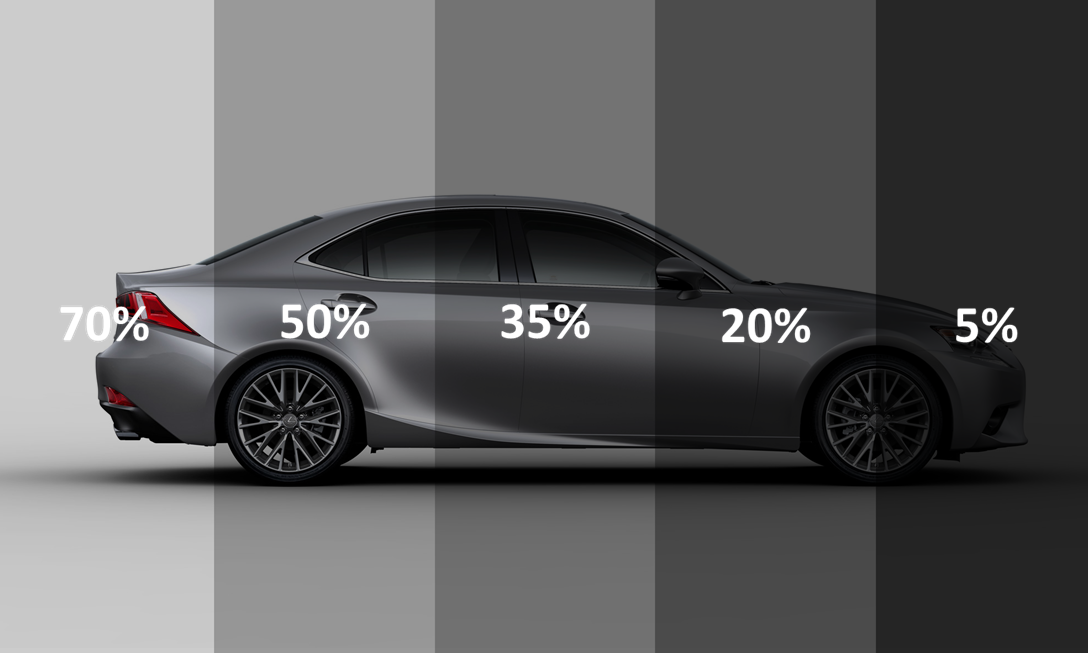
Most newer Lexus IS models come with a factory tint of 95 percent or less. If you want more privacy or protection against the sun, consider window tints that are 90 percent or lower. Smaller tint numbers offer more protection, but some drivers note that it can interfere with electronic devices such as GPS or other navigation tools. Professionals often install a 50 percent tint on the front windshield, followed by 35 percent for the sides and rear. Lexus drivers often prefer to have a professional install the tint to ensure a smooth, even cover and lasting results.
Light tint 50%+
Most states allow up to 50 percent darkness. This level of tint provides enough privacy and sun protection along with adequate visibility for both the driver and other vehicles on the road.
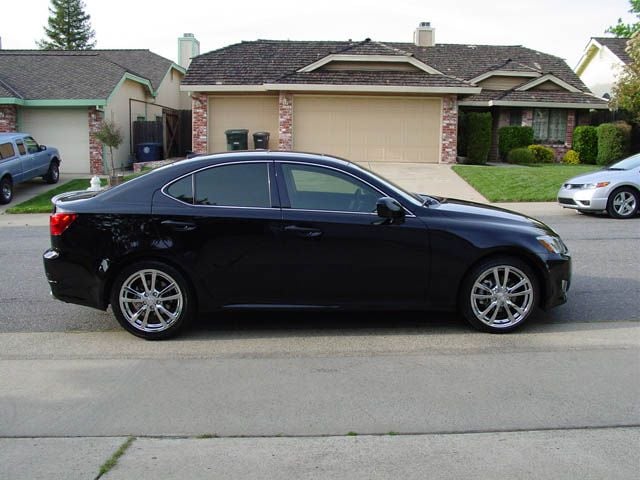
Figure 1. 50% tint on front windows; 5% tint on rear windows. 
Figure 2. 70% tint. 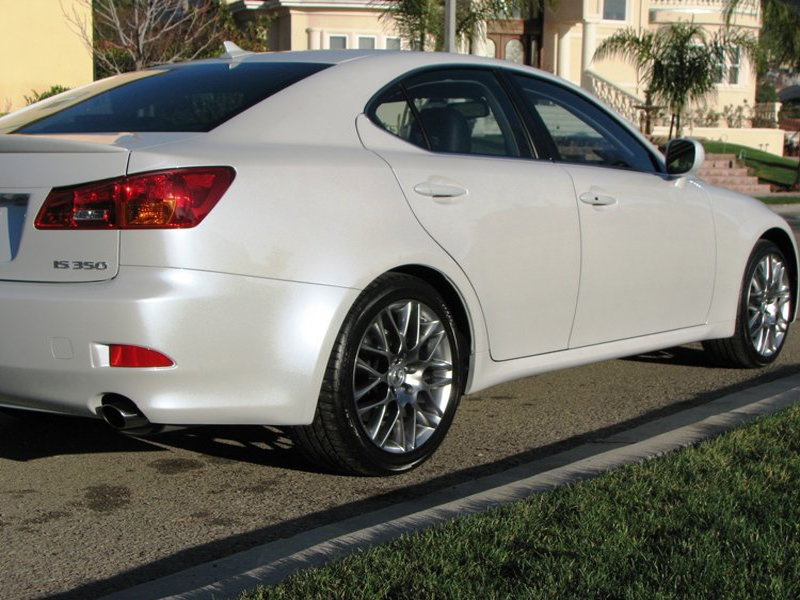
Figure 3. 61% tint all around.
Intermediate tint 50-35%
According to Tintlaws.com, window tinting under 50 percent isn't necessary to be effective. However, some drivers prefer lower percentages. In many states, 35 percent is the lowest acceptable tint percentage. Take a look at your state's laws if you want to go under 35 percent, as this level of window tinting is illegal in some places.
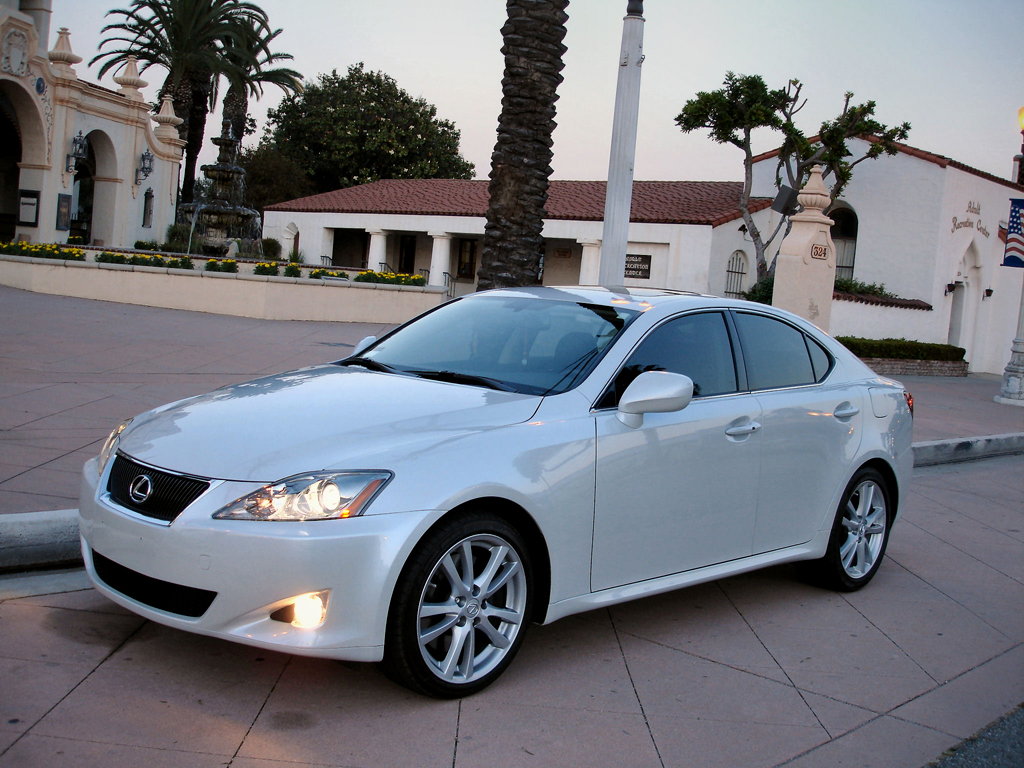
Figure 4. 35% tint. 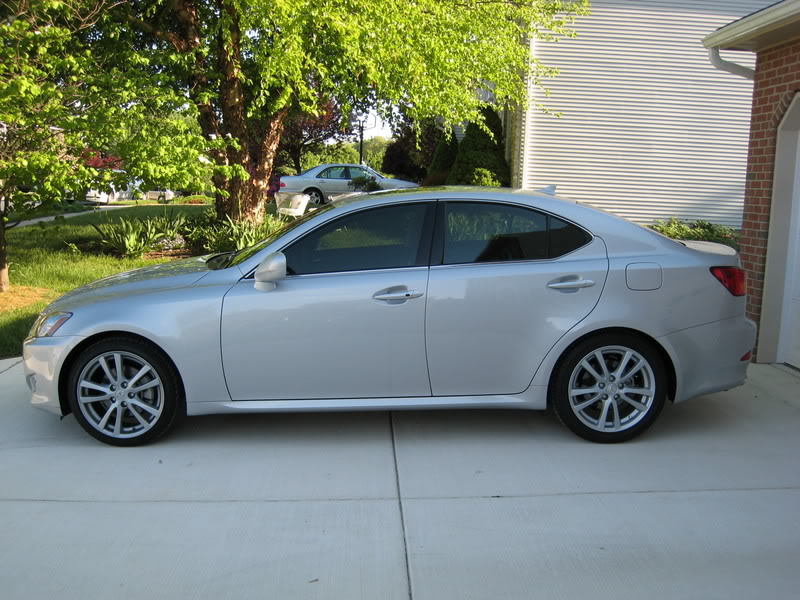
Figure 5. 40% tint. 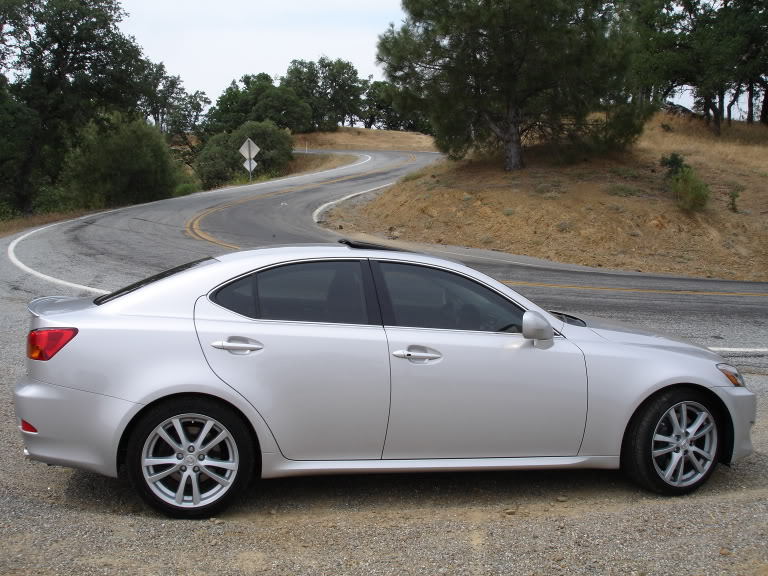
Figure 6. 35% tint. 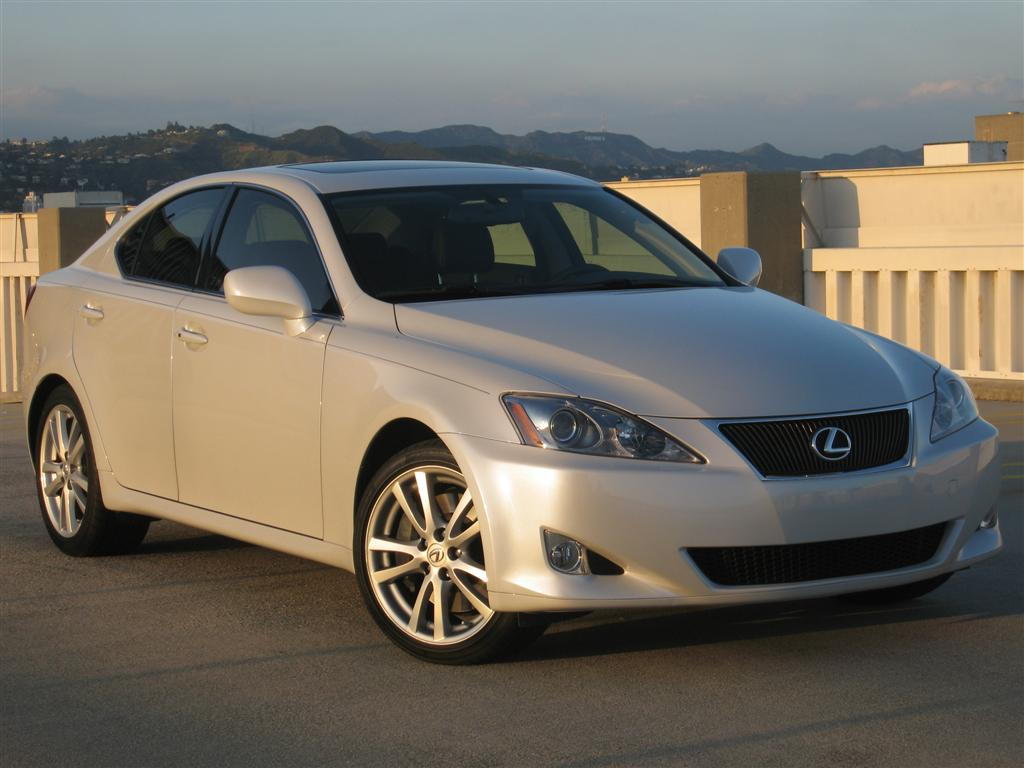
Figure 7. 35% tint all around.
Dark tint 30-20%
Window tints in this range are quite dark, letting in a small portion of sunlight. Drivers in warmer climates and frequent exposure to sunlight often prefer dark window tinting.
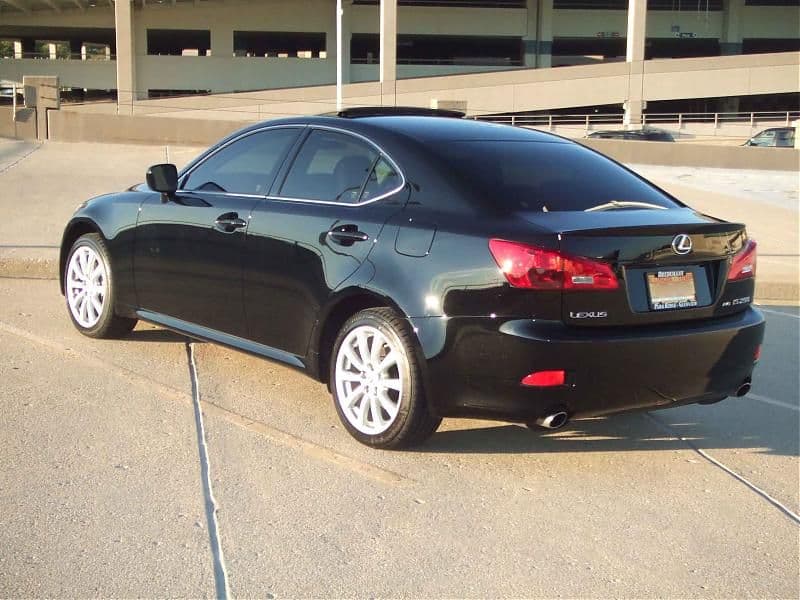
Figure 8. 20% tint. 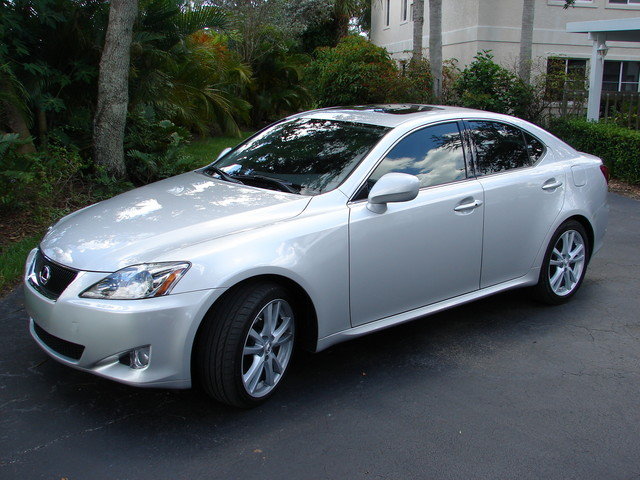
Figure 9. 30% tint. 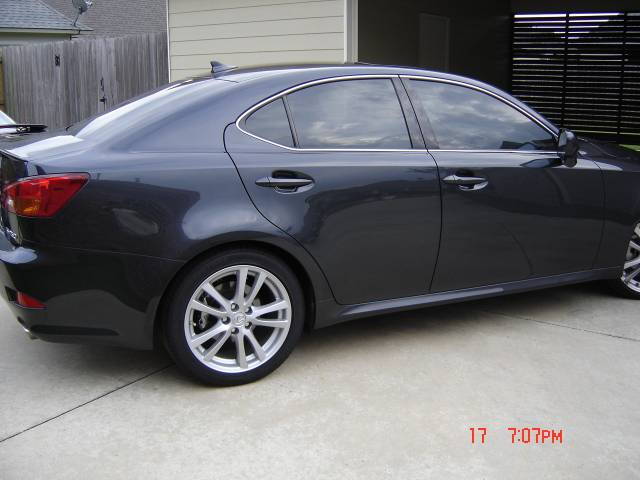
Figure 10. 25% tint. 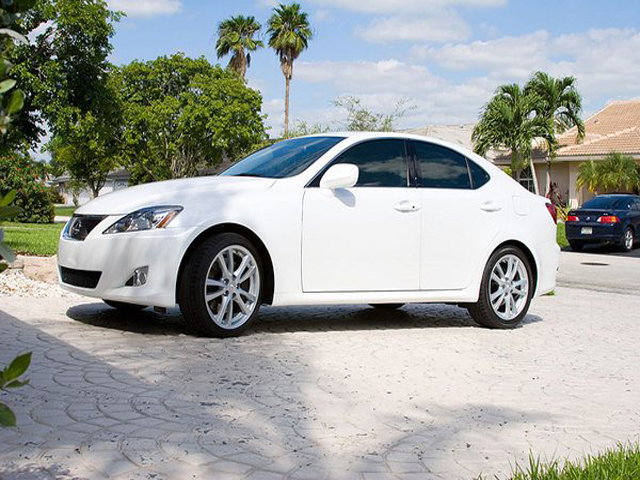
Figure 11. 28% tint.
Super dark tint 15-5%
This level of window tinting is often illegal in most areas. However, drivers in the southernmost states, such as Texas, may be able to get by with this level of tinting. Most drivers avoid tints in this range as they can reduce visibility and can interfere with certain devices, including GPS navigation systems.
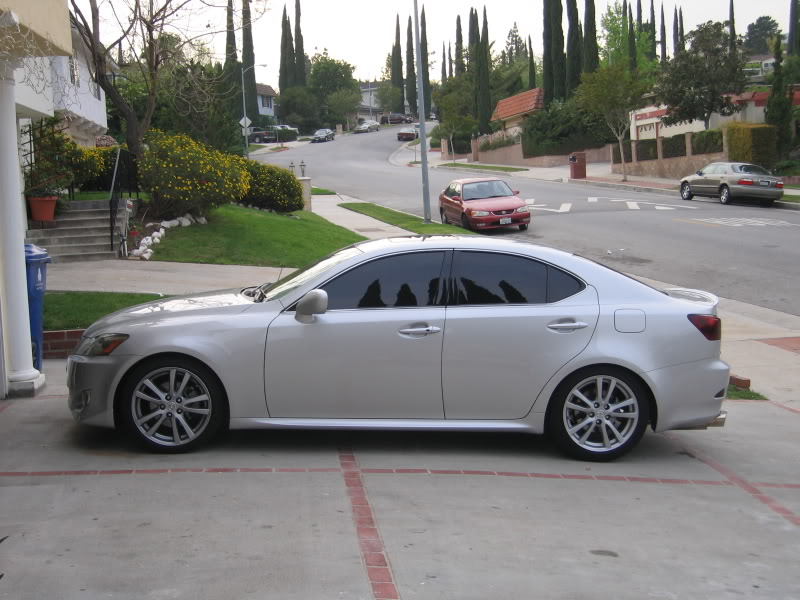
Figure 12. 5% tint. 
Figure 13. 5% tint all around. 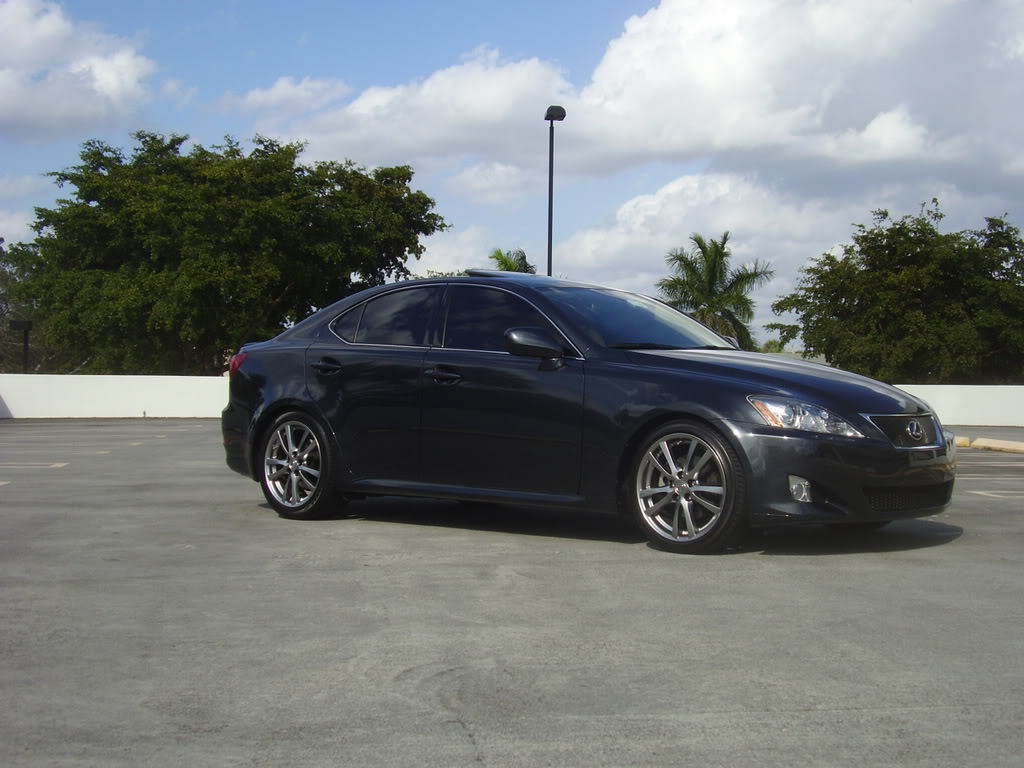
Figure 14. 5% tint all around. 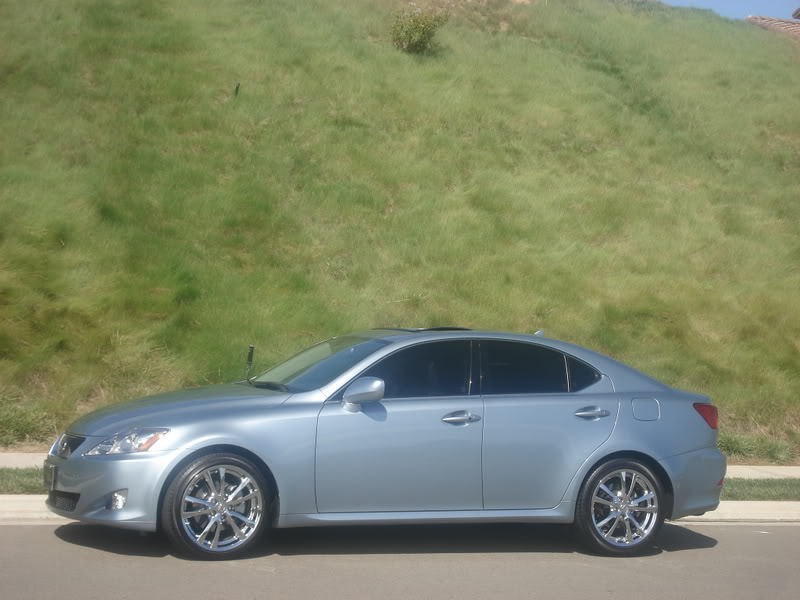
Figure 15. 5% tint rear windows; 15% tint front windows.
Tail Light Tinting
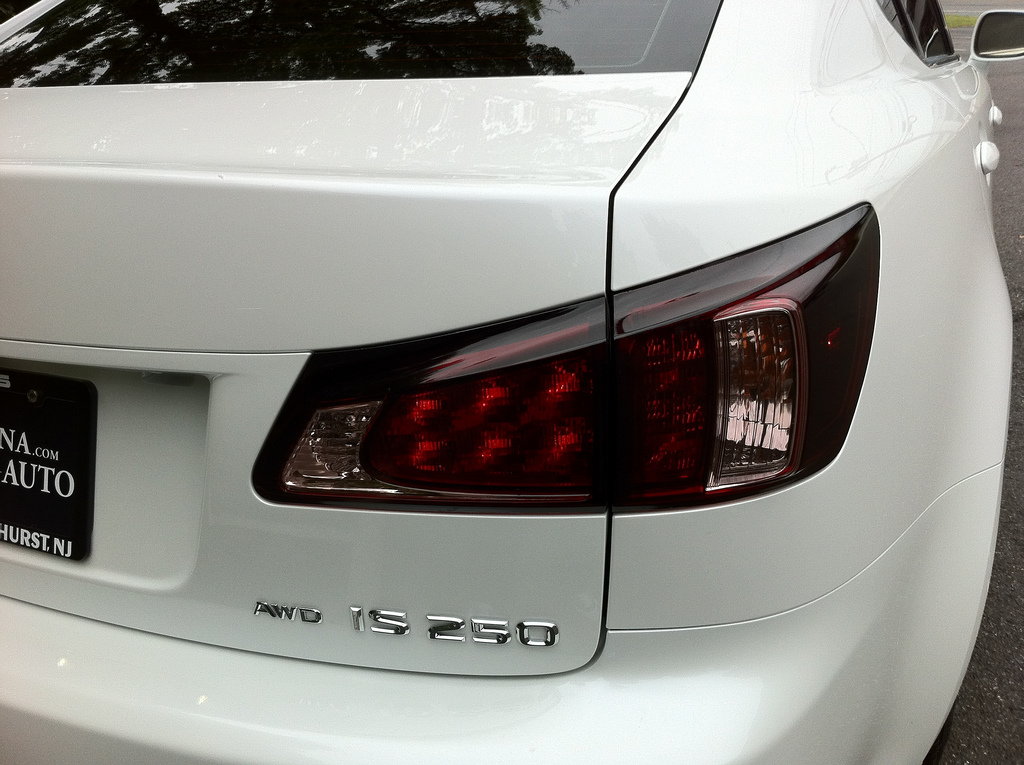
DIY Cost – $25-$50
Professional Cost – $120-$150
Skill Level – Moderate to difficult depending on the vehicle year and tail light shape.
Tail light tinting adds an aesthetic touch to the car, but it is often a difficult job on the IS, especially the second generation. This is largely due to the car's tail light cut and style, which easily promotes creases and uneven cover when tail light tinting. IS owners determined to tint their tail lights should search for precut tint to make it easier. Many shops recommend painting the tail lights darker instead of tinting them due to the complexity of the job.
Related Discussion and Sites
- Official 2nd Gen IS Tint Thread - ClubLexus.com
- Tint Regulations and Laws - Tintworld.com
- Local Window Tint Laws - Firstcoastglasscoatings.com

